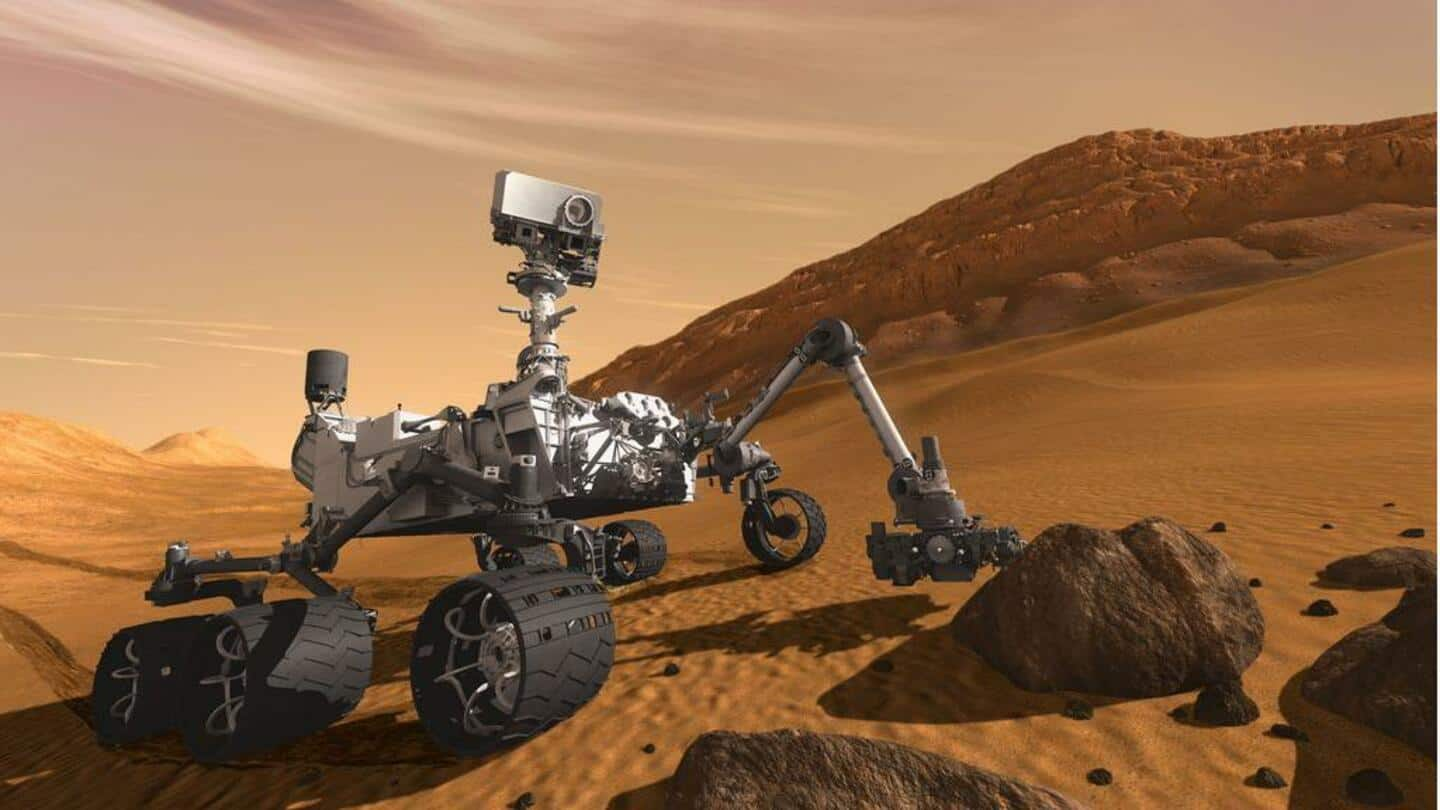
NASA's Curiosity Rover discovers water-rich opal gems on Mars
What's the story
NASA's Curiosity Rover has discovered water-rich opal gems in the Gale Crater on Mars. If the water held in these gems can be harvested then one day it might support crewed missions to the red planet. While water is known to be abundant at the Martian poles, it is less common at the equator where these opal gems have been found.
Context
Why does this story matter?
Curiosity Rover, the largest and most capable rover ever sent to Mars, successfully completed a decade on the red planet in August 2022. It is currently probing the Gale Crater region, a large basin with a massive, layered mountain at the center. The discovery of opals, which can serve as a potential source of water, will be advantageous for future exploratory space missions.
Discovery
Opals were discovered based on data gathered by Curiosity
Researchers, based on the rover's observations, noticed that there were light-toned rocks surrounding fractures in the Gale Crater and upon further analysis, confirmed that they were opals indeed. The findings reveal that there are vast networks beneath the surface of the red planet that can provide water-rich and radiation-shielded conditions, making the subsurface more habitable than the surface itself.
Conclusion
Opals have a more loosely bound structure than minerals
Opals form from a solution containing water and silica. On Earth, such solutions are found in geysers, hot springs, and the bottom of oceans, among other sources. When silica particles start to sediment, they begin to form opal. Also, since the structure of opal is more loosely bound than minerals, this means water can easily be extracted from it.
Official words
Habitable subsurface conditions might be present in other Martian areas
"Given the widespread fracture networks discovered in Gale Crater, it's reasonable to expect that these potentially habitable subsurface conditions extended to many other regions of Gale Crater as well, and perhaps in other regions of Mars," said Travis Gabriel, a research physicist. "These environments would have formed long after the ancient lakes in Gale Crater dried up."
Prime mission
Curiosity Rover is carrying NASA's most powerful astrobiology science equipment
The prime mission of the Curiosity Rover was to determine if Mars was habitable or not. Among its list of discoveries, the rover found that ancient Mars has the right chemistry to support living microbes based on the "Sheepbed" mudstone sample. Its in-house Sample Analysis at Mars (SAM) equipment is one of NASA's most powerful astrobiology instruments on Mars.